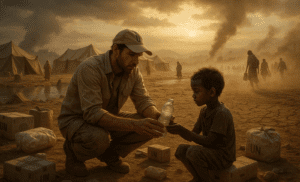On 9 August 2025, the world came together to celebrate the International Day of the World’s Indigenous Peoples, a global observance first declared by the United Nations General Assembly in 1994. This year’s theme “Land and Legacy: Upholding Indigenous Rights to Culture, Territory and Heritage,” highlights the continuing struggle of Indigenous peoples to protect their ancestral lands, languages, and cultural identities amid growing environmental and political pressures.
From the Amazon rainforest to the Arctic tundra, Indigenous communities are the frontline guardians of some of the planet’s most vital ecosystems. Yet, according to UNESCO and the UN Permanent Forum on Indigenous Issues (UNPFII), these same communities face disproportionate threats from deforestation, mining, climate change, and cultural marginalization. UNESCO Director-General Audrey Azoulay reaffirmed the organization’s commitment to Indigenous inclusion, stating that “protecting Indigenous heritage means protecting the future of humanity’s diversity.”
This year’s observance saw gatherings in Geneva, New York, Nairobi, Canberra, and Quito, as well as hundreds of local ceremonies across Indigenous territories. In Geneva, Indigenous leaders like Hindou Oumarou Ibrahim from Chad and Tarcila Rivera Zea, a Quechua activist from Peru, addressed delegates on the urgent need for Indigenous representation in global climate and heritage policies. Both called for stronger recognition of Indigenous land rights and respect for the principle of “Free, Prior, and Informed Consent” (FPIC), a legal standard enshrined in the United Nations Declaration on the Rights of Indigenous Peoples (UNDRIP), adopted in 2007.
According to UNESCO, Indigenous peoples make up around 476 million individuals across 90 countries, representing 6.2 percent of the world’s population. Yet they safeguard 80 percent of the planet’s remaining biodiversity, often without secure legal ownership of the lands they have inhabited for centuries. Many of these areas overlap with UNESCO World Heritage Sites, such as Uluru-Kata Tjuta National Park in Australia, Tongariro National Park in New Zealand, and the Sacred Mijikenda Kaya Forests in Kenya, all recognized for both ecological and cultural significance.
UNESCO’s engagement with Indigenous peoples has deepened in recent years. The organization’s 2018 Policy on Engaging with Indigenous Peoples formalized its responsibility to include Indigenous voices in cultural and natural heritage management. In 2025, UNESCO appointed Dr. Candace Kaleimamoowahinekapu Galla from Hawai‘i and Dr. Rajeshwari Singh from India as new co-chairs for Indigenous Knowledge Governance, part of a growing effort to integrate traditional wisdom into modern science and climate adaptation strategies.
Language preservation remains another urgent concern. Nearly 40 percent of the world’s 7,000 languages, most of them Indigenous, are at risk of disappearing. UNESCO’s International Decade of Indigenous Languages (2022-2032) aims to reverse this loss through education, technology, and policy reform. Projects in Canada, Mexico, and the Philippines are using digital archives and youth mentorship programs to revive endangered tongues such as Inuktitut, Nahuatl, and Ifugao.
Despite these advances, Indigenous communities continue to face challenges from extractive industries, agribusiness, and poorly implemented conservation programs. Victoria Tauli-Corpuz, former UN Special Rapporteur on the Rights of Indigenous Peoples, has warned that many “green” projects still displace Indigenous peoples in the name of environmental protection. In response, the International Work Group for Indigenous Affairs (IWGIA) and the UN Special Rapporteur’s office are pushing for stronger safeguards to ensure Indigenous participation in all heritage and climate-related decisions.
The cultural and ecological importance of Indigenous stewardship is now widely acknowledged. In Brazil, President Sônia Guajajara, the country’s first Minister of Indigenous Peoples, has led major land demarcation efforts for Amazonian communities. In Norway, Sámi activists continue their legal battles to protect traditional reindeer herding lands from wind farm development. In Canada, First Nations governments are co-managing UNESCO sites such as Kluane National Park and Reserve, setting an example of shared governance.
UNESCO reports that over 1,150 World Heritage Sites and more than 500 Intangible Cultural Heritage elements have direct links to Indigenous communities. These include traditional dances, crafts, languages, and ecological practices from Māori weaving in Aotearoa to Wayuu textile art in Colombia and Venezuela. Preserving these expressions, the agency notes, is crucial not only for Indigenous identity but for humanity’s collective cultural heritage.
As Audrey Azoulay put it, “Indigenous peoples hold knowledge that has sustained humanity for millennia. Their protection is everyone’s responsibility.” The message from this year’s observance was clear: defending Indigenous rights is not just a matter of justice but of global survival. Protecting Indigenous lands means protecting biodiversity, climate stability, and cultural diversity, all of which form the legacy that future generations will inherit.



















